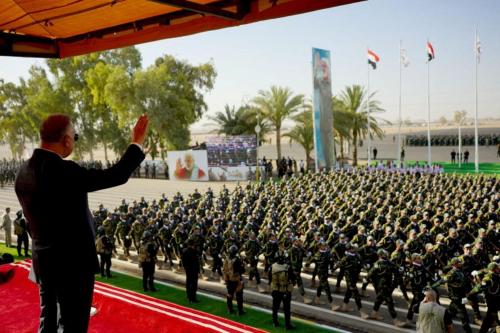During President Obama’s address to the nation last night, he displayed decisiveness and conviction in laying out the American strategy for addressing the growing regional and national security threat presented by the Islamic State of Iraq and the Levant (ISIL). Gone was the equivocation of last Thursday when he shocked some foreign policy experts by telling reporters “we don’t have a strategy yet.”
His four tenet plan calls for increased support to Iraq forces on the ground through additional U.S. airstrikes, the deployment of an additional 475 servicemen to support training, intelligence and logistics requirements, a commitment to draw on the nation’s “substantial counterterrorism capabilities to prevent ISIL attacks” and a promise to continue support of humanitarian efforts for innocent civilians displaced by ISIL. The president reaffirmed U.S. commitment to lead a broad coalition of regional and non-regional partners against this terrorist threat and cited recent examples of American leadership roles in addressing the Russian incursion into Ukraine and the Ebola outbreak in western Africa.
He was resolute in his promise to hunt down terrorists wherever they are, making it clear that this includes territories in Iraq as well as Syria. Perhaps his strongest statement was the promise that if terrorists threaten America, they will find no safe haven. The president also took special care to point out that the servicemen who will deploy to Iraq “will not have a combat mission.”
For a soldier, it is counterintuitive to enter a declared theater of conflict with a mindset that is anything short of combat-focused. Regardless of how policy language is crafted, it will be difficult to put the American public at ease regarding this emerging mission. Nearly 500 servicemen and women will deploy to Iraq to conduct “non-combat,” enabling operations with Iraqi forces. It is a slippery slope to assume that U.S. personnel on the ground can neatly excise themselves from the risks that are inherent in the combat theater. Their force protection becomes not only a priority, but an attractive vulnerability to an enemy whose fundamentalist appeal grows in direct proportion to the brutality of their tactics.
By declaring that U.S. personnel will not have a combat mission, we risk increasing the stakes for their success and increasing the burden of their mission by ensuring that force protection will override every other concern. A chief aspect of partnership in any alliance is sharing the risk with the partner; this will be difficult to achieve given the president’s promise to keep these service personnel out of combat operations.
The president closed his remarks by acknowledging the inherent risks of military service and the precarious nature of the mission these personnel will undertake. It remains to be seen whether or not our servicemen and women can accomplish this mission without once again firing shots in anger on Iraqi soil.



Commentary
Obama’s Plan for ISIS: A Slippery Slope Enabling U.S. Partners
September 11, 2014